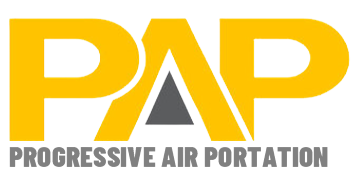Employee lifecycle planning and SaaS management intersect to form a critical aspect of modern organizational strategy. This extensive guide explores the intricate relationship between employee lifecycle stages and SaaS management. By examining this intersection, readers will gain insights into how a strategic approach to employee lifecycle management planning informs effective SaaS utilization, fostering productivity and efficiency across various organizational functions.
Understanding the Employee Lifecycle:
The employee lifecycle comprises several stages, including recruitment, onboarding, performance management, talent development, and offboarding. This section provides an in-depth overview of each stage, emphasizing their significance in shaping employees’ experiences within an organization. It elucidates how these stages intertwine and contribute to overall workforce management.
Role of SaaS in Employee Lifecycle Planning:
SaaS solutions play a pivotal role in facilitating seamless employee lifecycle management. This segment explores how various SaaS applications and platforms are tailored to address specific needs within each stage of the employee life cycle. It highlights the functionalities and benefits of SaaS tools in recruitment automation, onboarding efficiency, performance tracking, learning management, and exit processes.
Recruitment Stage and Applicant Tracking Systems (ATS):
Effective recruitment lays the foundation for a successful employee life cycle. This part focuses on the role of Applicant Tracking Systems (ATS) in recruitment processes. It explores how ATS streamlines candidate sourcing, application management, resume screening, interview scheduling, and candidate communication, ultimately optimizing the recruitment stage.
Onboarding Stage and HR Management Systems (HRMS):
Seamless onboarding sets the tone for a new hire’s integration and engagement. The guide elaborates on the role of HR Management Systems (HRMS) in the onboarding stage. It delves into how HRMS automates paperwork, centralizes employee self service, facilitates compliance, and fosters a smooth onboarding experience, ensuring a positive introduction to the organization.
Performance Management Stage and Performance Tracking Tools:
Continuous performance management contributes to employee growth and organizational success. This segment discusses the significance of performance-tracking tools within the performance management stage. It highlights how these tools enable goal setting, feedback mechanisms, performance reviews, and data-driven evaluations, driving employee development and productivity.
Learning and Development Stage and Learning Management Systems (LMS):
Continuous learning and development are vital for employee skill enhancement. The guide explores the role of Learning Management Systems (LMS) in this stage. It emphasizes how LMS platforms deliver training content, track learning progress, personalize learning experiences, and assess the impact of training programs, fostering a culture of continuous learning.
Employee Engagement Stage and Engagement Platforms:
Engaged employees contribute significantly to organizational success. This part focuses on employee engagement platforms. It discusses their role in facilitating employee surveys, feedback mechanisms, recognition programs, and collaboration spaces, ultimately fostering a positive work culture and boosting employee satisfaction.
Offboarding Stage and Transition Tools:
Offboarding, though often overlooked, is a crucial part of the employee lifecycle management. This section elaborates on the role of transition tools during offboarding. It emphasizes their importance in conducting exit interviews, managing knowledge transfer, and ensuring a smooth departure, preserving goodwill and organizational knowledge.
Data Security and Compliance throughout the Lifecycle:
The guide underscores the importance of data security and compliance measures across all employee lifecycle stages. It discusses how SaaS management should align with data protection regulations, ensuring robust security protocols, access controls, and compliance adherence to safeguard sensitive employee information.
Integration, Customization, and Scalability:
Effective SaaS management entails integration, customization, and scalability. This segment explores how SaaS applications should seamlessly integrate with existing systems, offer customization options, and adapt to the organization’s evolving needs, promoting flexibility and scalability.
Click Here: You want to download Free HR Toolkit
Data Analytics and Reporting for Informed Decision-Making:
Informed decision-making relies on data-driven insights. This section underscores the significance of data analytics and reporting capabilities within SaaS solutions. It delves into how these tools offer HR analytics dashboards, customizable reports, and predictive analytics, empowering organizations to make strategic decisions backed by actionable data.
Maximizing SaaS Utilization through Employee Lifecycle Planning:
This segment bridges the connection between employee lifecycle planning and optimal SaaS utilization. It elucidates how a strategic approach to employee lifecycle management planning informs the selection, implementation, and utilization of SaaS solutions. It emphasizes the importance of aligning software choices with each lifecycle stage to maximize productivity and efficiency.
Challenges and Solutions in SaaS Management throughout the Lifecycle:
Managing SaaS solutions throughout the employee lifecycle isn’t without challenges. This part addresses common hurdles encountered in SaaS management, such as integration issues, data silos, user adoption, and software sprawl. It offers solutions and best practices to overcome these challenges, ensuring smooth software management across all stages.
Future Trends in SaaS Management and Employee Lifecycle Planning:
The guide concludes by discussing emerging trends in SaaS management and employee lifecycle management planning. It touches upon advancements in AI-driven HR tech, enhanced user experiences, predictive analytics, and the impact of remote work on SaaS utilization. It emphasizes the importance of staying abreast of these trends for future-proofing organizational strategies.
Conclusion:
The convergence of employee lifecycle management software planning and SaaS management is integral to modern organizational success. This guide aimed to illuminate the symbiotic relationship between these two facets, detailing how a strategic approach to employee lifecycle planning informs efficient SaaS utilization. By understanding the interplay between the employee lifecycle and SaaS solutions, organizations can optimize HR processes, enhance employee experiences, and drive overall success.
This comprehensive guide explores the symbiotic relationship between employee lifecycle planning and the strategic utilization of SaaS solutions. It delves into the role of various SaaS tools across different stages of the employee lifecycle management software, emphasizing the importance of aligning software choices with each stage to optimize HR processes and enhance organizational efficiency.



